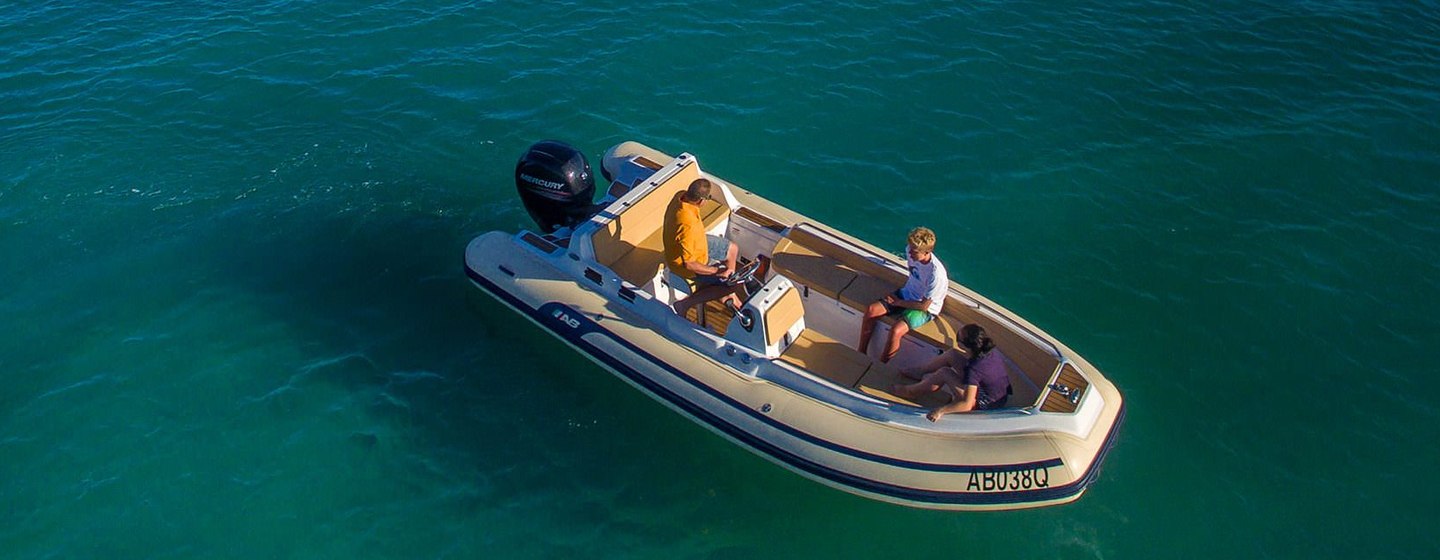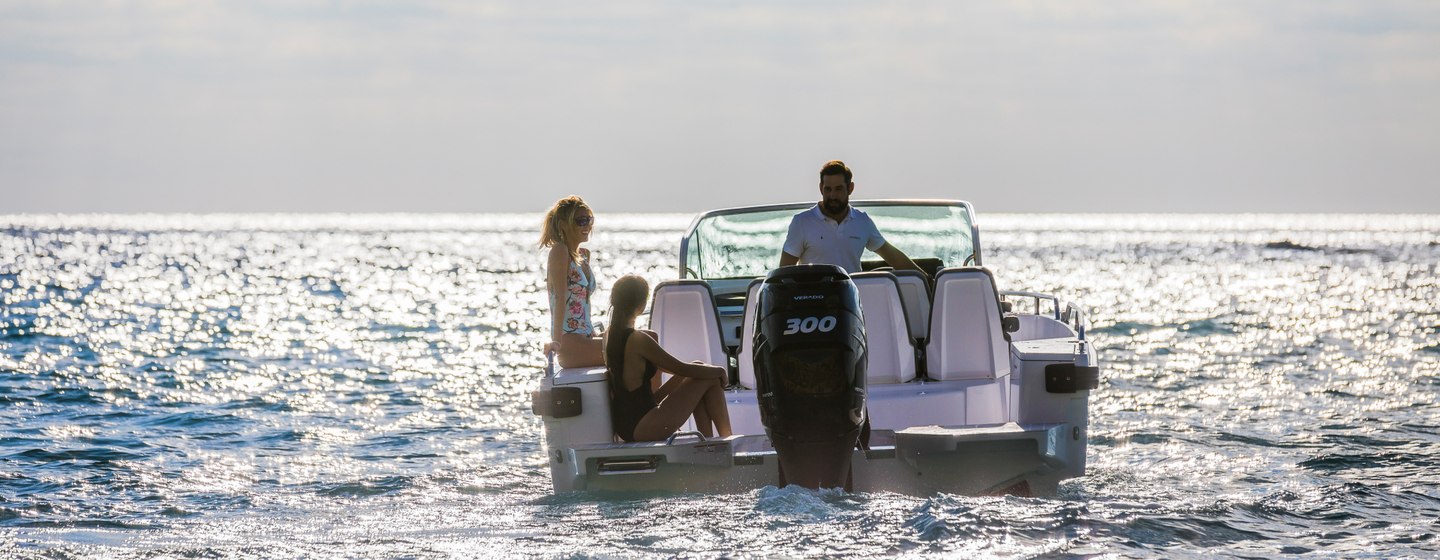The right size tender will be decided by several different factors, ranging from the size of the mothership to the launch and recovery system it uses. Alternatively, it could come down to personal preference, for reasons such as the number of guests you wish to carry in the tender or how you want to use it.
When buying a tender, the trick is to select a vessel that meets your requirements while still being easy to stow and simple to launch.
Is Bigger Always Better?
Although it is tempting to go for the largest tender possible, finding a balance between size and usability is key. A tender is a hugely important piece of equipment that is used as both a tool, and to also facilitate a range of activities for yourself and your guests.
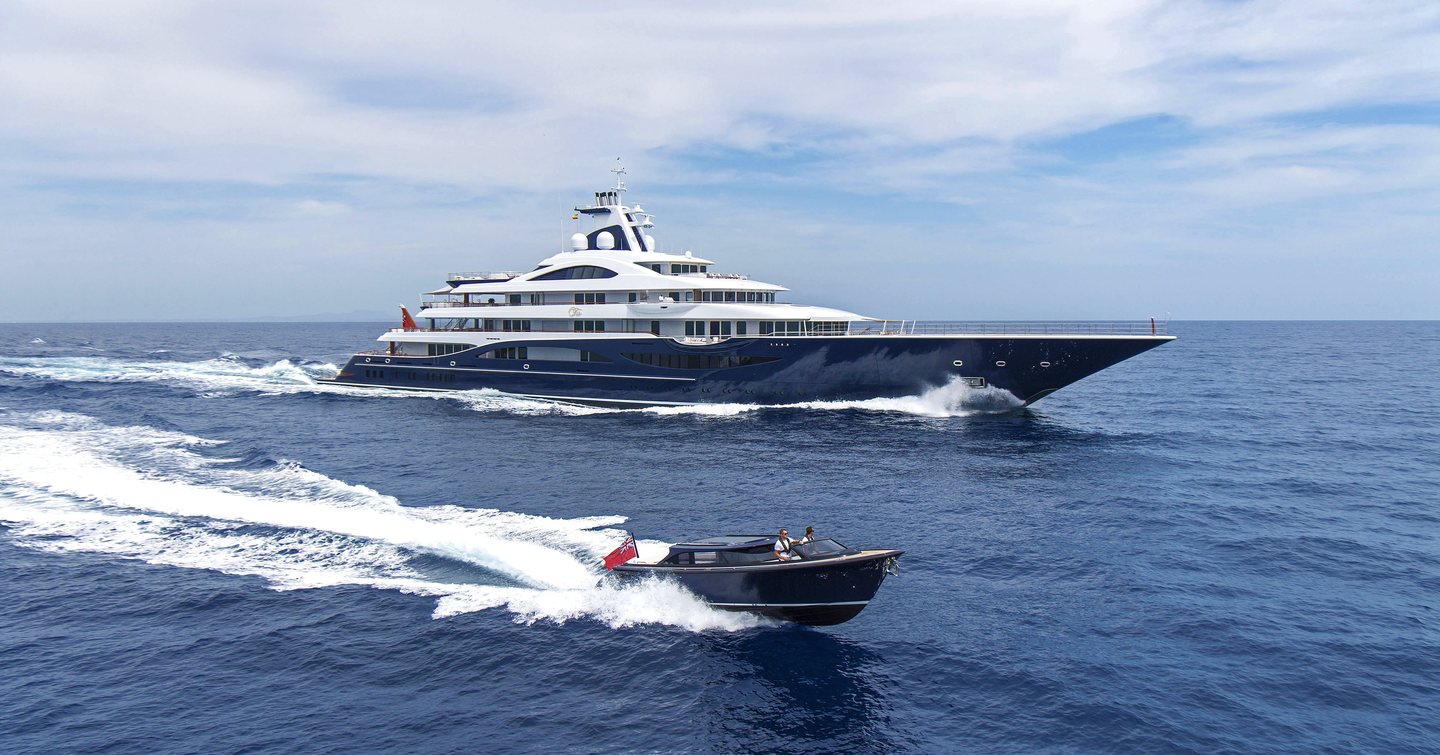
A few inches more, however, can make a big difference onboard tenders. A 3.2m RIB tender which benefits from a practical design may feel significantly bigger (and safer) than a 2.9m RIB for example. Although only slightly larger, the extra inches may be the difference between fitting four guests and their baggage onboard versus only two people on a smaller vessel.
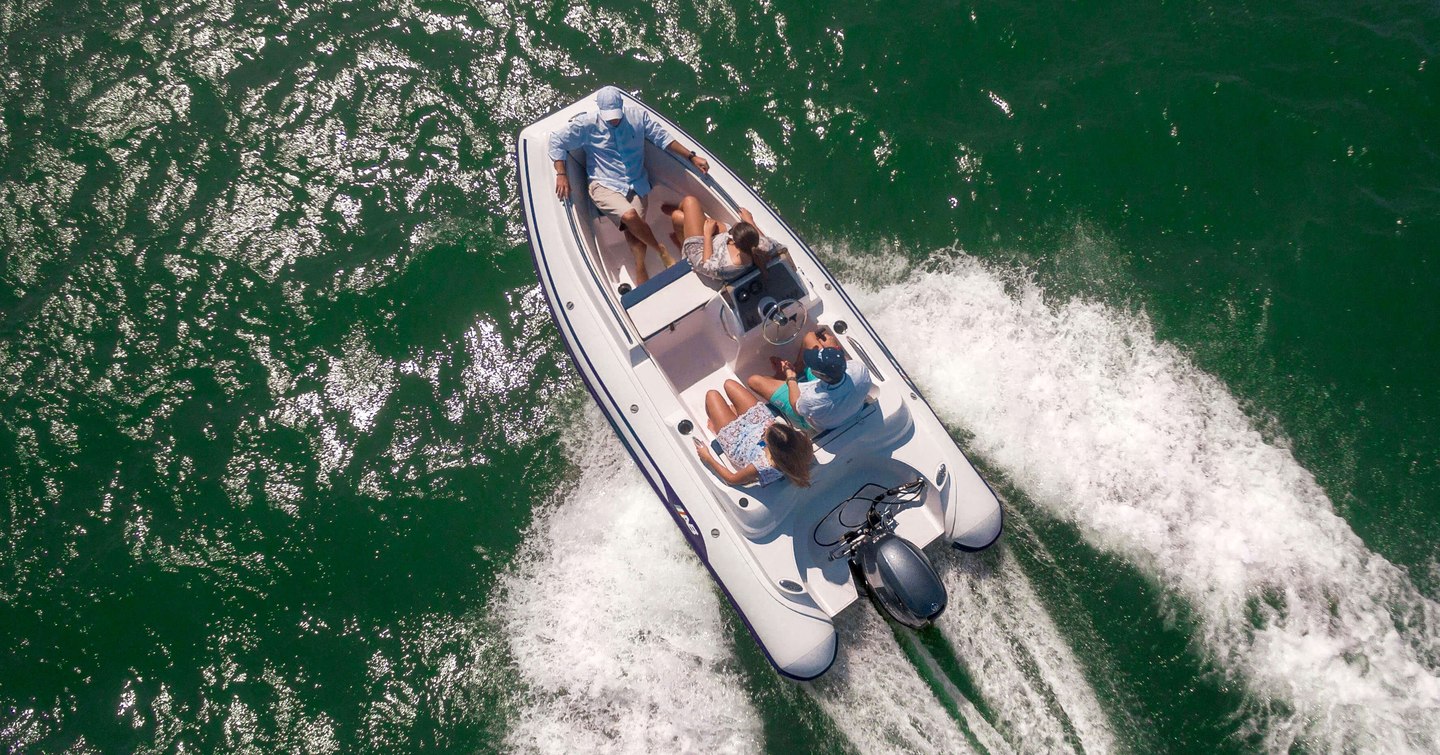
Yacht Design and Tender Capacity
In the past, tenders were either lashed to the decks or hung from davits over the stern. However, as tenders have become more sophisticated, powerful, and heavier, new stowage and launch systems were required. In parallel, modern yacht design also changed, with open sterns offering excellent access to the water but no room for a davit.
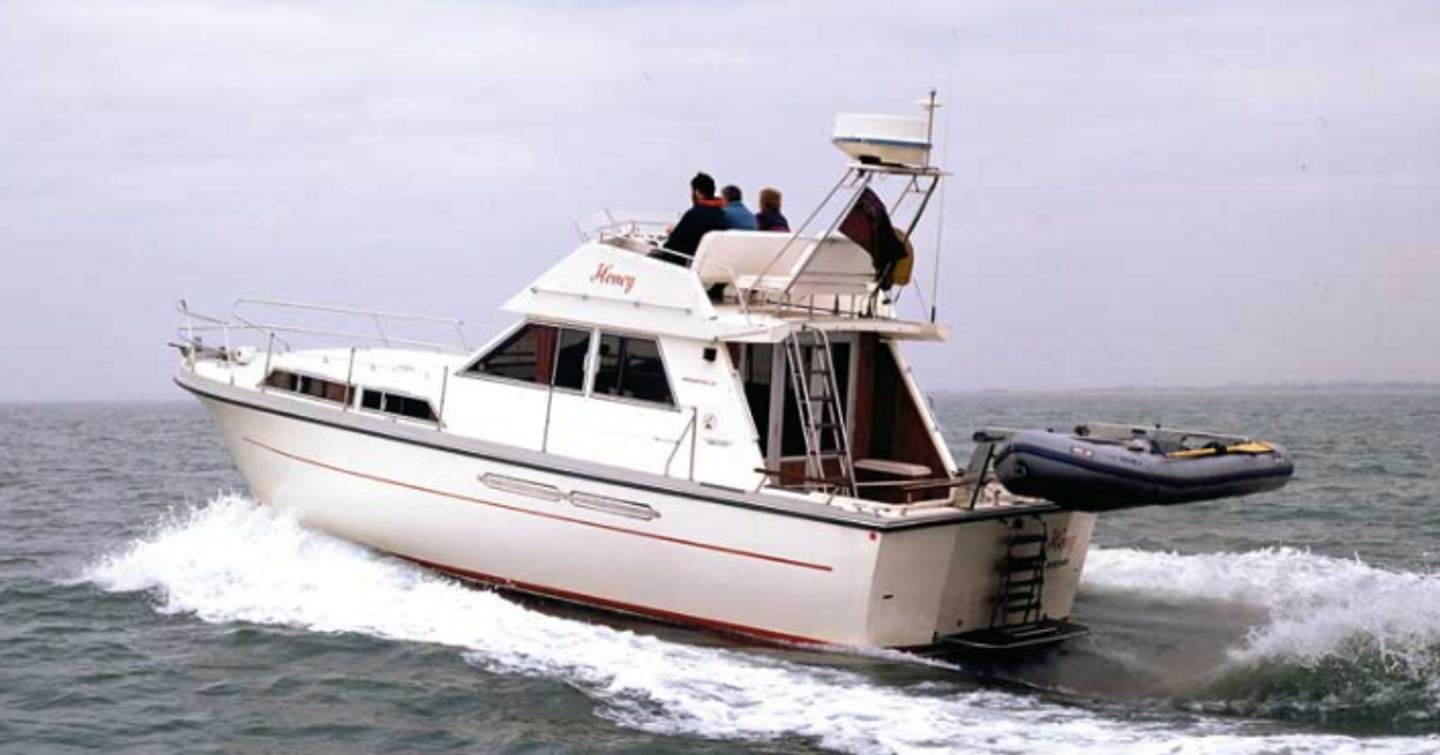
Some larger multi-deck yachts for sale over 15m-20m (50ft-66ft) may be able to stow a tender on the upper deck or flybridge, but a growing trend for enclosed tender bays — known as tender garages — means that tender size has reduced over the last 10 to 20 years.
Tender Garages
This design innovation helps to keep decks clean and clear, with a concealed bay to stow the tender. Due to this being a fixed space, it also limits the size of the tender that can fit inside, resulting in a vessel that is often smaller than its deck-mounted counterpart.
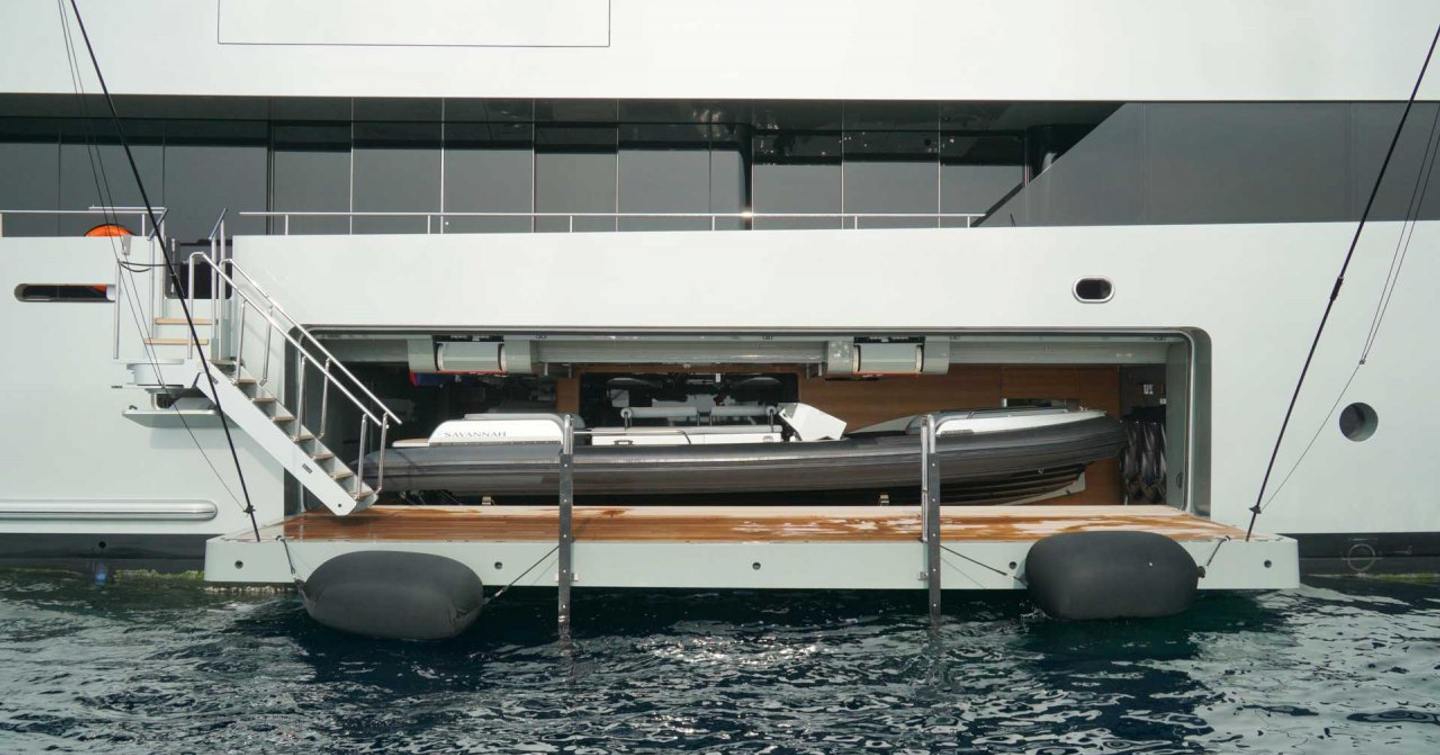
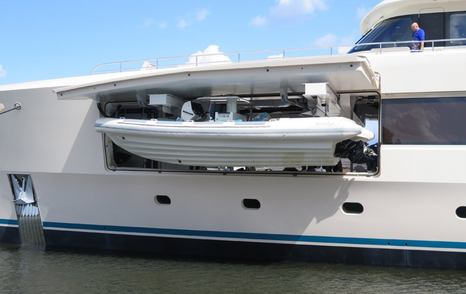

On large yachts and superyachts, the tender garage will be capable of accommodating a large RIB or craft of more than 6m. Smaller yachts under 20m, however, may be limited to a tender far smaller.
Tender Garage vs Deck-Mounted
Depending on the yacht, the capacity of the tender garage will vary. One 15m sports yacht might be able to take a 3.45m RIB, while another may only cater for a 2.9m RIB.
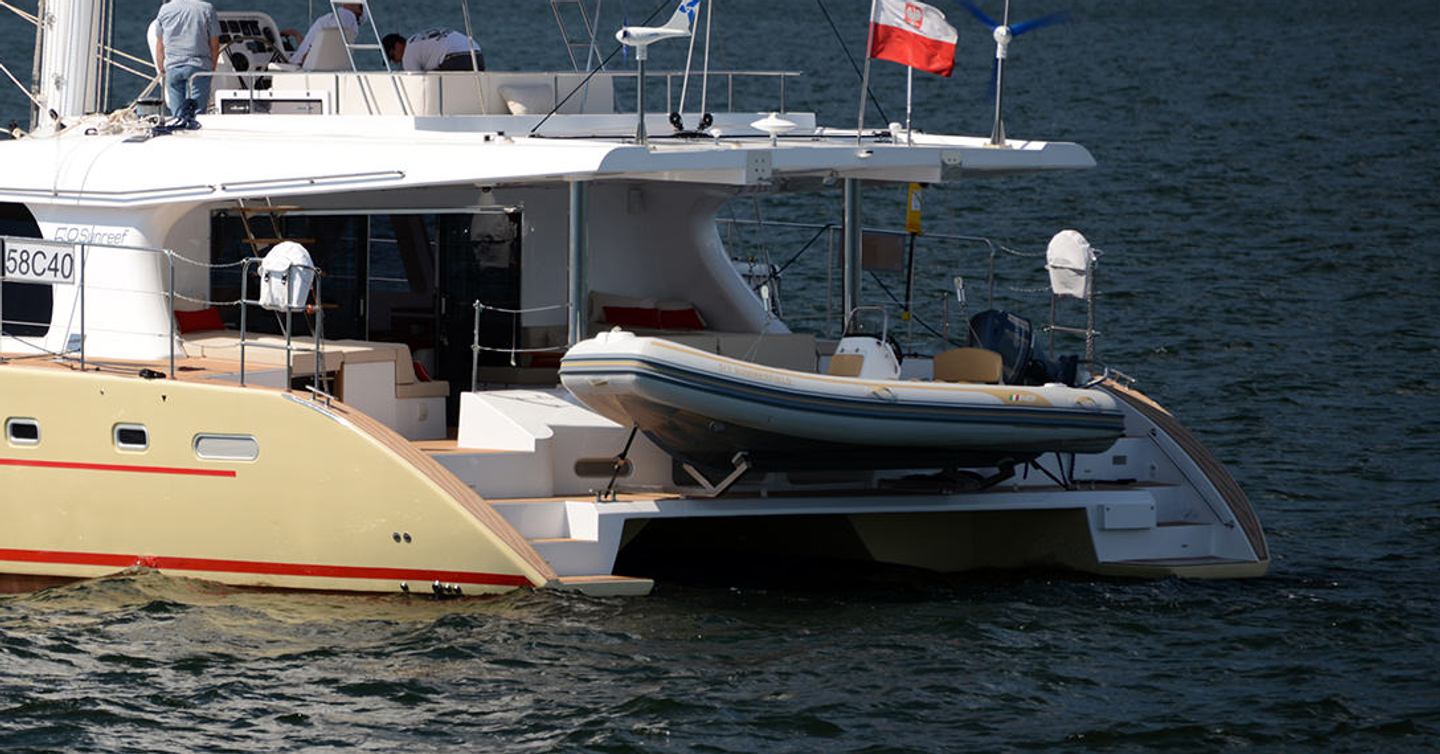
A bathing platform-mounted tender is limited by the overall beam of the yacht but can be further restricted by moldings that push back around the platform. The platform launch system is, however, usually on par with the larger tender garage capacities, with a 15m yacht able to accommodate a 3.2m-3.5m tender.
If the tender moves to the main or an upper deck, the size of the tender that can be accommodated may increase significantly, although weight limits may present an issue for upper deck stowage. Deck launch and recovery systems are often found on trawler and SUV yachts, in addition to larger flybridge models over 20m where added weight is less of a concern.
Find out more
Tender Size by Yacht Length and Launch System
The size of your mothership will have an impact on the type of tender and launch system that can be accommodated. Below you will find a range of suitable tender sizes and launch systems for your yacht type.



The below tender sizes are based on actual yacht models, with an average taken from multiple examples.
| Stowage type | Yacht size (m) | |||||
| - | Up to 12 | 12 - 15 | 15 - 20 | 20 - 25 | 25 - 30 | 30 - 40 |
| Swim platform | 2.5 | 3.0 | 3.2 | 3.5 | 4.5 | - |
| Tender garage | 2.0 | 2.8 | 3.2 | 3.7 | 4.7 | 5.8 |
| Deck | - | - | - | 5.0 | 5.0 | 8.0 |
Yachts above 30m often store their tenders in tender garages or by using a deck mounting system. Yachts over 40m have more space available and therefore can stow multiple tenders or a tender and personal watercraft (PWC).
The figures show that contemporary designs, such as flybridges and sports yachts of between 12m-20m are remarkably similar in their tender capacities, at approximately 3m (10ft).
Tender Size by Yacht Type
There are an ever-increasing number of production yacht models based on the same footprint, where one hull and deck design are utilized for multiple models and types; most usually flybridge, sports yacht, and sportsbridge. As a result, there are some similarities in tender capacity.
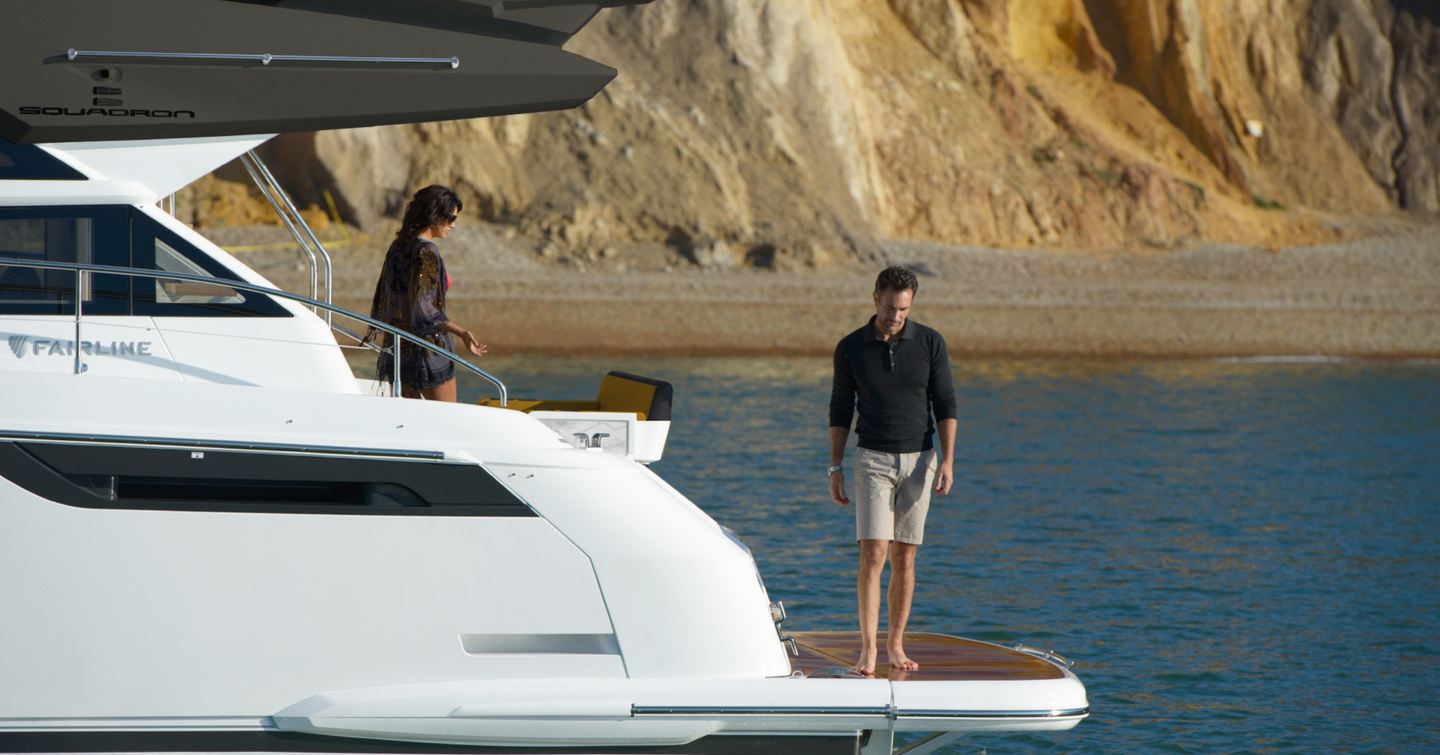
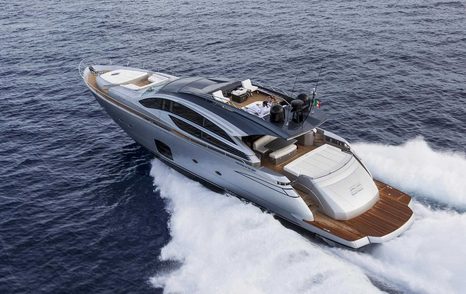
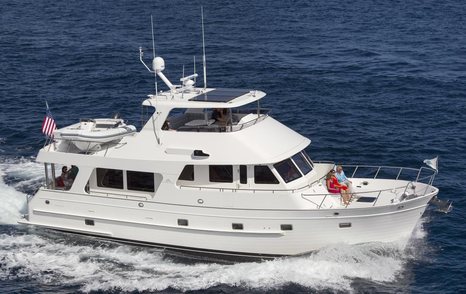
Trawler and SUV yachts benefit from several design advantages, enabling them to carry and cater to significantly larger tenders when compared to other yacht types.
| Design Type | Yacht Size (m) | ||||
| Up to 12 | 12 - 15 | 15 - 20 | 20 - 25 | 25 - 30 | |
| Flybridge | - | 2.8 | 3.2 | 3.8 | 4.7 |
| Sports Yacht | 2.5 | 2.8 | 3.2 | 3.7 | 4.5 |
| Trawler/SUV | 2.5 | 3.4 | 3.3 | 4.5 | 5.0 |
Crew Capacity
A tender's design will have a knock-on effect on how many people can be comfortably and safely accommodated onboard.
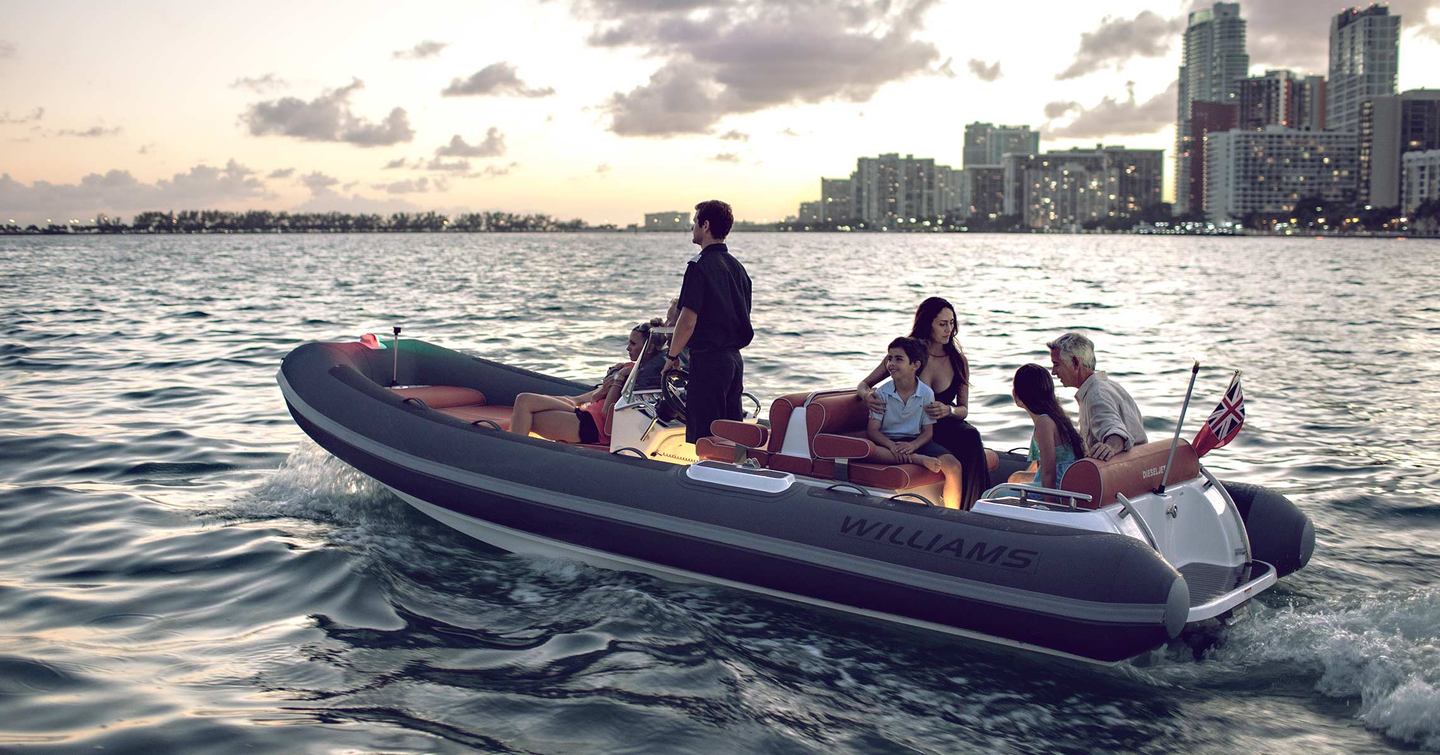
More luxurious tenders, such as those with roofs, may offer less space but more privacy and protection from the elements for users. Alternatively, open-top designs such as RIBs may offer additional seating for guests and crew, and be able to carry out additional activities and operations.
| Tender (m) | Persons |
| Up to 2.5 | 2 |
| 2.5 - 3.0 | 2 - 4 |
| 3.0 - 3.5 | 4 |
| 3.5 - 4.0 | 4 - 5 |
| 4.0 - 5.0 | 5 - 8 |
| 5.0 - 6.0 | 8 - 10 |
| 7.0 - 8.0 | 12 - 14 |
Money Talks
The price of a tender will vary hugely depending on its size, type, and brand. To help in your important decision, we have created three groups consisting of entry-level, mid-range, and premium tenders.
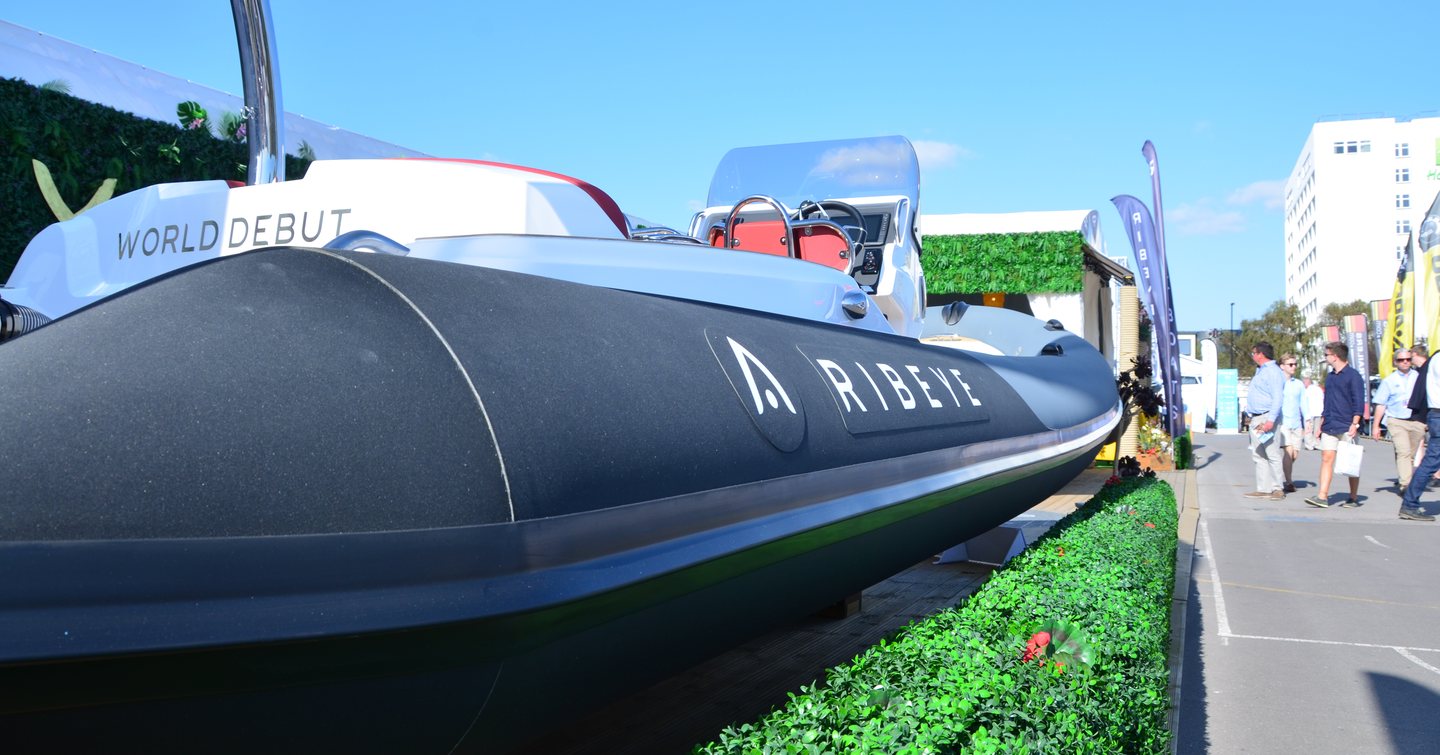
Please do, however, remember that this is only a guide, as tender prices vary significantly depending on brand pedigree and build quality. For a more detailed review, please read our full guide to tender prices.
Entry-level Tenders
Entry-level tenders are perfectly good, practical boats that come equipped for the job at hand. Often, they are as capable as more expensive tenders but may lack certain creature comforts or have lower performance levels.
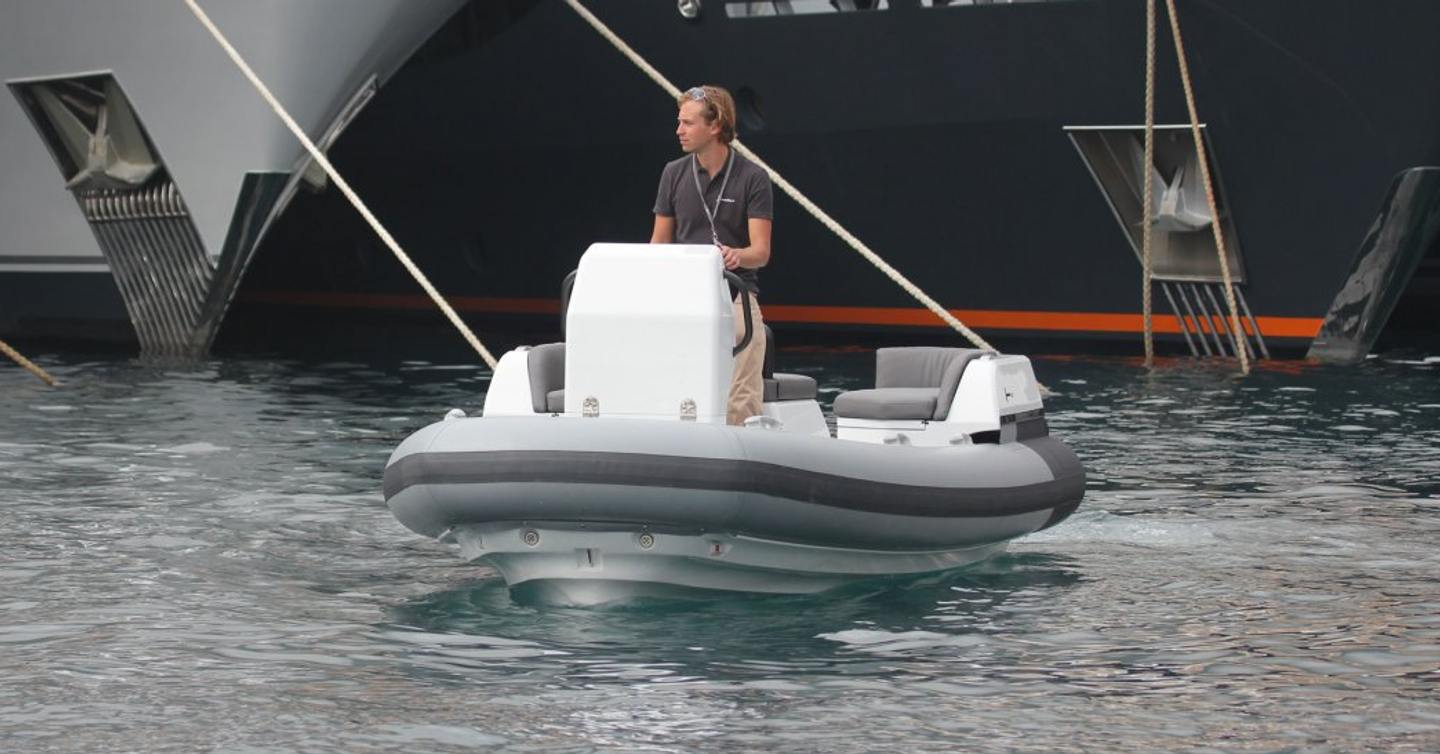
The smallest tenders start at approximately USD $1,500 and are most commonly RIBs or fully inflatable and easily stowed dinghies. It is also worth noting that the entry-level tender prices quoted — especially those at the smaller end of the size spectrum — exclude the engine, as this comes at an additional cost.
| Tender LOA (m) | Price Range | |
| € | $ | |
| Up to 3 | 1.25 - 2.5k | 1.5 - 3k |
| 3 - 4 | 2.5 - 4.2k | 3 - 5k |
| 4 - 5 | 4.2 - 12.5k | 5 - 15k |
| 5 - 6 | 12.5 - 21k | 15 - 25k |
| 6 - 7 | 21 - 33.5k | 25 - 40k |
Mid-range Tenders
Mid-range tenders begin to offer a little more in terms of specification and equipment, with more room, comfortable seating, and additional storage built in. Performance is also enhanced to get you and your guests (or crew) from A to B quicker.

As with entry-level tenders, these boats are predominantly open-top RIBs and you should set aside at least USD $3,000 for a smaller mid-range vessel.
| Tender LOA (m) | Price Range | |
| € | $ | |
| Up to 3 | 2.5 - 7.5k | 3 - 9k |
| 3 - 4 | 7.5 - 15k | 9 - 18k |
| 4 - 5 | 15 - 25k | 18 - 30k |
| 5 - 6 | 25 - 38k | 30 - 45k |
| 6 - 7 | 38 - 59k | 45 - 70k |
| 7 - 8 | 59 - 92k | 70 - 110k |
| 8+ | 92 - 210k | 110 - 250k |
Tenders from 4m to 5m continue to offer luxurious elements such as sunbed areas and more supportive seating. Moving above 6m, additional bespoke design elements are available, along with a wider range of vessel types to choose from, including beach-landers and amphibious tenders.
Premium Tenders
A premium tender will be incredibly well built and will offer a full and highly sophisticated specification. Brand value plays a massive part in this sector, with huge price differences between similar boats.
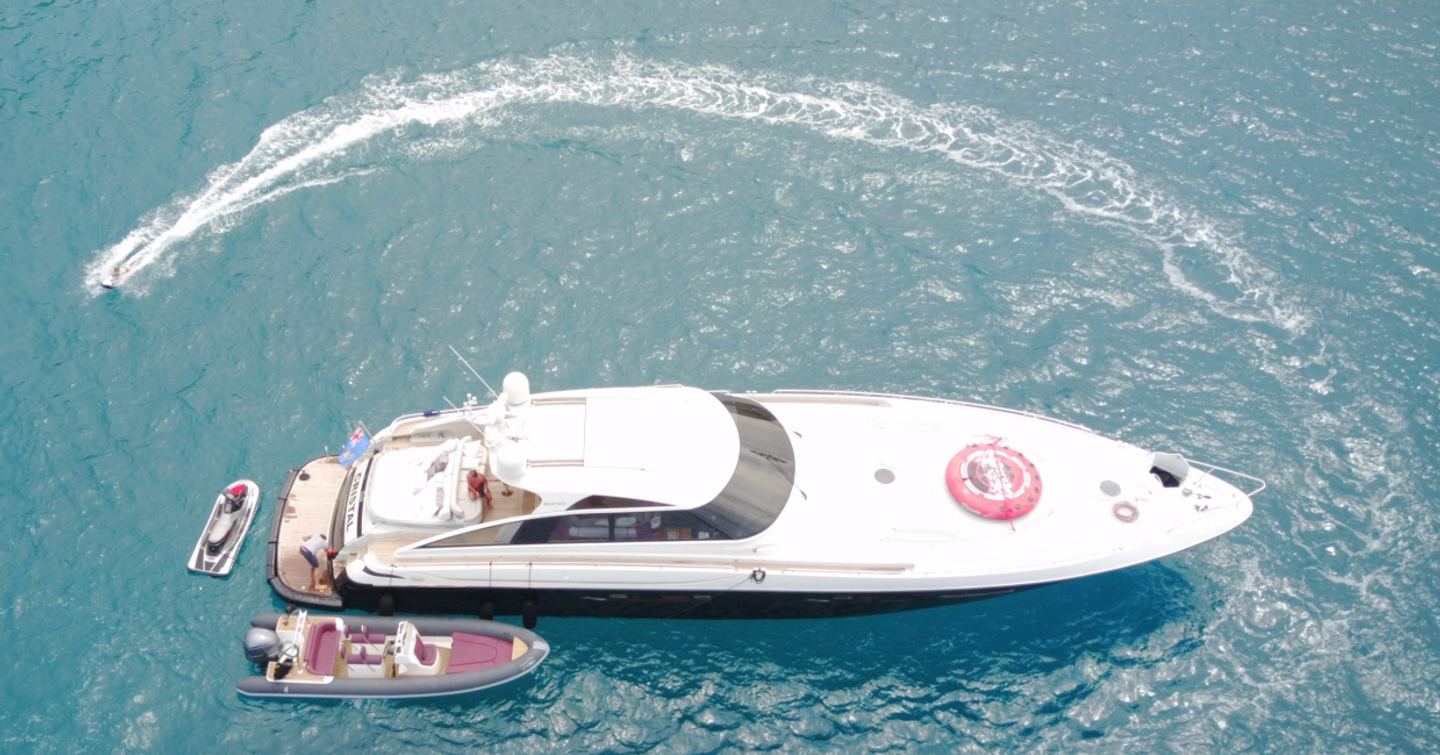
Speed and performance increase yet again, with faster and more capable craft often falling into the premium camp. A whole host of tender designs and types is found within the premium sector, especially above 6m where beach-landers, classics, amphibious craft, jet tenders, and limousines are prevalent.
| Tender LOA (m) | Price Range | |
| € | $ | |
| Up to 3 | 7.5 - 30k | 9 - 35k |
| 3 - 4 | 30 - 42k | 35 - 50k |
| 4 - 5 | 42 - 67k | 50 - 80k |
| 5 - 6 | 67 - 92k | 80 - 110k |
| 6 - 7 | 92 - 168k | 110 - 200k |
| 7 - 8 | 168 - 252k | 200 - 300k |
| 8+ | 252 - 1.7m | 300k - 2m+ |
The very largest premium tenders — 8m and above — start at approximately USD $300,000, with certain limousine tenders over 12m costing upwards of USD $2m.
Customization also plays a huge part within this sector, with a vast array of different seating layouts, materials, color schemes, and engine sizes to choose from.
Find out more
